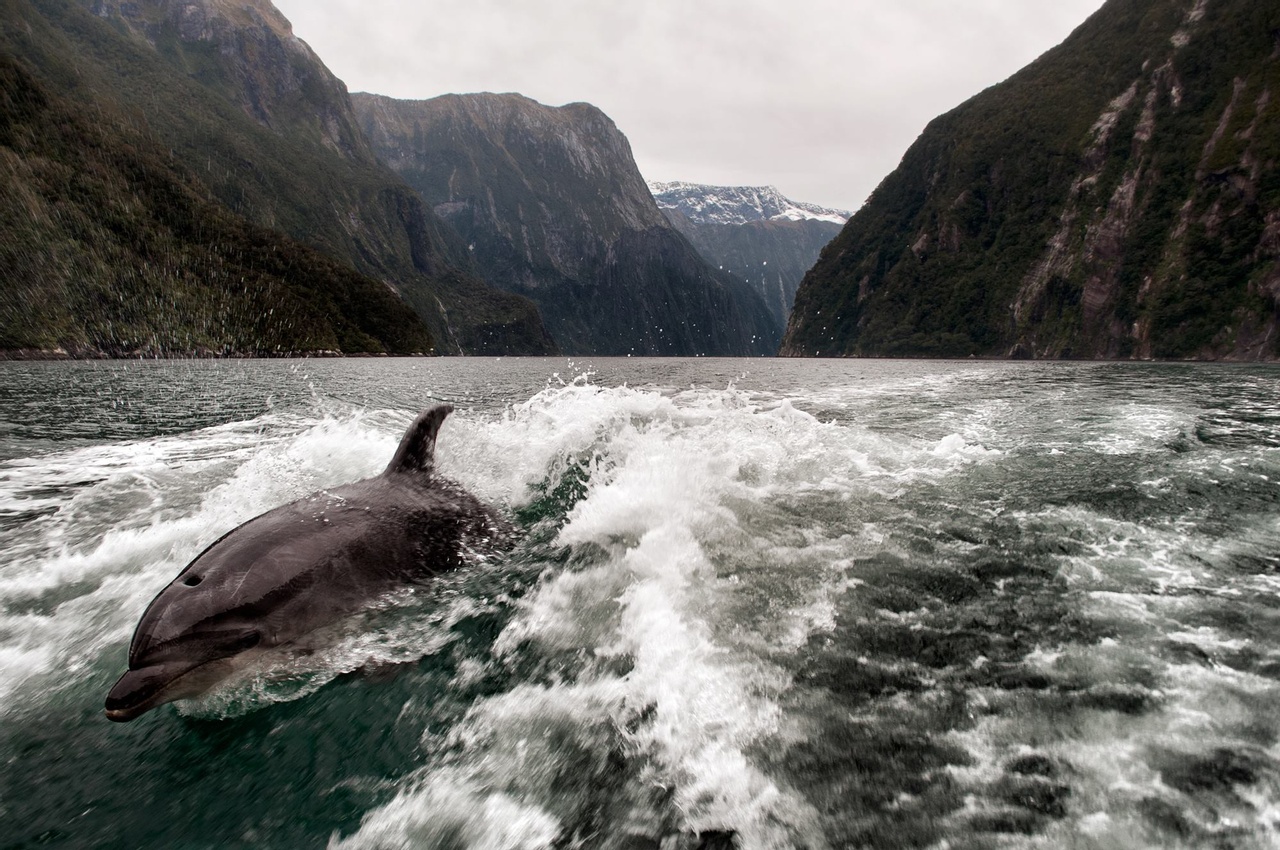
Fiordland
At over 1.2 million hectares, Fiordland National Park is not only New Zealand’s largest national park, but one of the biggest in the world. Established in 1952, the park covers vast and remote wilderness, and is home to some of the best hiking in New Zealand. Spanning mountain ranges, dense forests and alpine lakes, it is hard to imagine a place better suited to nature lovers and explorers than Fiordland National Park.
Fiordland National Park is made up of 14 fiords, the most well known being Milford Sound which was famously described as the eighth wonder of the world by Rudyard Kipling.
Untouched extremes
Altitudes reach their highest in the park’s north at the 2746m peak of Mt Tūtoko, within the Darran Mountain range.
The glacial action also created the great lakes of Te Anau, Manapouri, Hauroko, Monowai, Poteriteri, and Hakapoua. These lakes match the fiords symmetrically on the eastern and southern margins of the park, the result being a combination of deep valleys, sheer rock faces sometimes over 1500m high, and extremely steep slopes. Both the fiords and the lakes are over 400m deep in places and the bottom of the lakes is well below sea level.
The remaining two thirds of Fiordland National Park is a primeval world of mountain peaks covered by virgin beech and podocarp forest, alpine lakes and moss-carpeted valleys, and it has remained wild and largely untouched.


A solid foundation
The underlying rock of the park is mostly granite, gneiss and diorite. These igneous rocks are among the oldest in New Zealand (mostly Ordovician), and are among the hardest and most resistant to erosion, helping them remain almost unchanged since the last ice age, when an ice cap was covering the mountain areas of Fiordland.
The glacier tongues that flowed from it gouged the 14 fiords that fringe the southwest seaward edge of Fiordland National Park. Shaped like massive knife cuts into the land, these fiords were carved during successive ice ages and were 100,000 years in the making. The final details added during the most recent ice age just 10,000 years ago.
On all sides of the fiords, spectacular waterfalls tumble as the region's plentiful rainfall finds its way to the sea. The most famous of these, Milford Sound is visited by over 300,000 tourists annually.
Wildlife
Fiordland is home to some of the most unique birds in New Zealand, including the only wild population of takahē in the world. A large flightless bird, the takahē was thought to be extinct, until rediscovered in 1948. Fiordland is also the only South Island habitat of the endangered brown teal and was also the final refuge of the world’s only flightless parrot, the nocturnal kākāpo.
Fiordland remains a stronghold for several other endangered species such as the brown kiwi, South Island kaka, yellow crowned parakeet, New Zealand falcon, and the threatened blue duck. Fiordland's many waterways provide habitat for many aquatic bird species, including New Zealand scaup, grey duck, and New Zealand shoveler. The Fiordland Crested Penguin - one of the world's rarest species of penguin, and the blue penguin - the world's smallest penguin, are both found in Fiordland.
Marine mammals are found extensively in Fiordland with pods of bottlenose and dusky dolphins found in the fiords and common and hector's dolphins mostly outside the fiords. Humpback, sperm and southern right whale have been sighted off the coast, as well as orca. New Zealand fur seals are by far the most common seal species in Fiordland but southern sea elephants come ashore occasionally, as do leopard seals.


